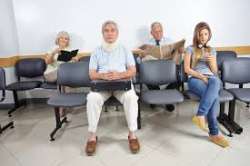The ‘chair effect’: Prolonged sitting resulting in 4 pc deaths worldwide, claims study
There is reason for alarm if you do not indulge in any form of physical activity and spend most of your time sitting. According to a new study, nearly 4 per cent of all the

There is reason for alarm if you do not indulge in any form of physical activity and spend most of your time sitting.
According to a new study, nearly 4 per cent of all the people who die every year across the world — approximately 4,33,000 — die because of their sedentary lifestyle, spending more than three hours a day just sitting down.
Researchers, including those from San Jorge University in Spain, estimated the proportion of deaths attributable to the 'chair effect' in the population of 54 countries, using data from 2002 to 2011.
"It is important to minimise sedentary behaviour in order to prevent premature deaths around the world," said lead author of the study Leandro Rezende from the University of Sao Paulo in Brazil.
He noted that "cutting down on the amount of time we sit could increase life expectancy by 0.20 years in the countries analysed."
The results show that over 60 per cent of people worldwide spend more than three hours a day sitting down - the average in adults is 4.7 hours per day - and this is the culprit behind 3.8 per cent of deaths (about 433,000 deaths per year).
The highest rates were found in Lebanon (11.6 per cent), the Netherlands (7.6 per cent) and Denmark (6.9 per cent), while the lowest rates were in Mexico (0.6 per cent), Myanmar (1.3 per cent) and Bhutan (1.6 per cent).
Even a more modest reduction in sitting time, by 10 per cent or half an hour per day, could have an immediate impact on all causes of mortality (0.6 per cent) in the countries evaluated.
Today's lifestyle has an impact on these numbers. In fact, various studies over the last decade have demonstrated how the excessive amount of time we spend sitting down may increase the risk of death, regardless of whether or not we exercise, researchers said.
The study was published in the American Journal of Preventive Medicine.
(With agency inputs)